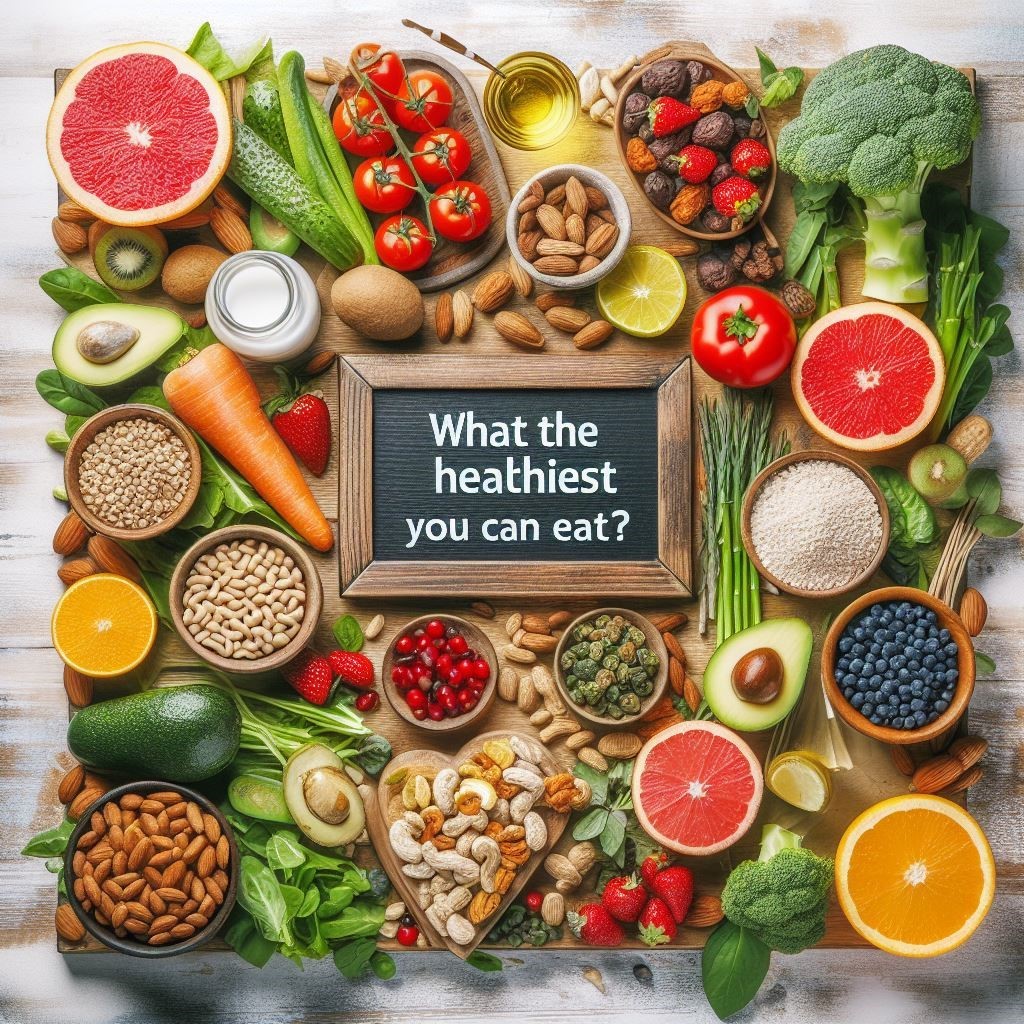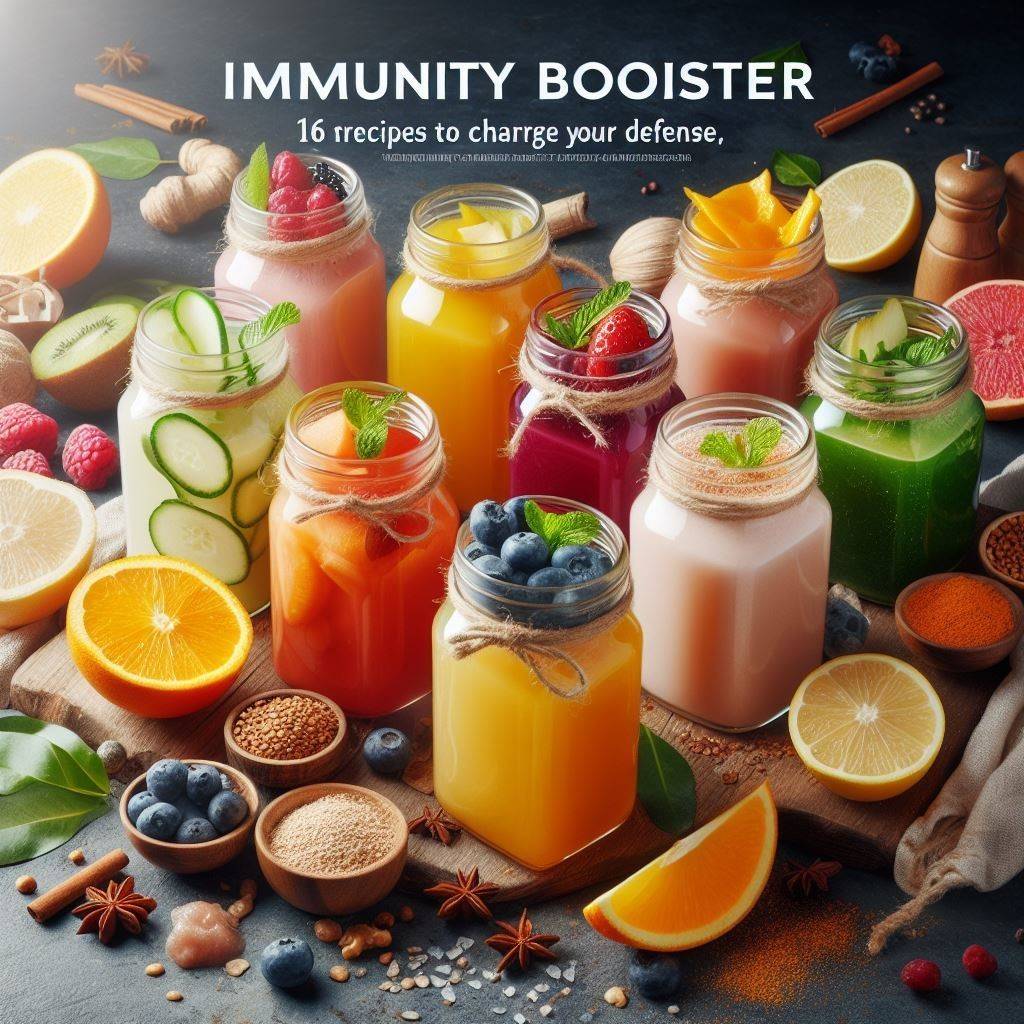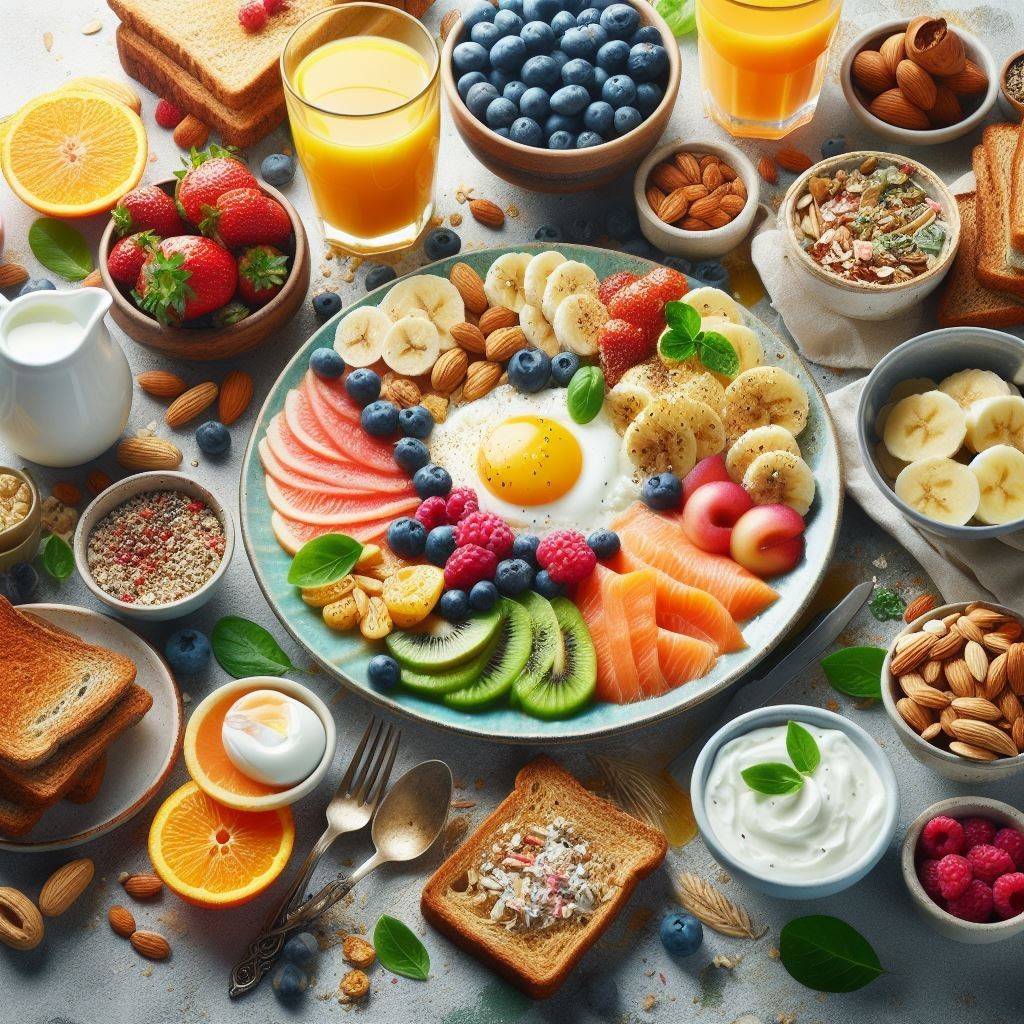What is the healthiest you can eat? A Guide to Optimal Nutrition.
What is the healthiest you can eat? Eating a balanced, nutritious diet is key to maintaining health and preventing disease. When it comes to the healthiest foods to eat, there are some clear standouts. Here is a comprehensive overview of the most nutritious foods and dietary patterns to aim for.
The Basics of a Healthy Diet
Before diving into specific foods, it’s important to understand the core principles of healthy eating. These dietary basics provide the foundation for optimizing nutrition:
- Focus on whole foods. Maximize your nutritional intake with whole, unprocessed options such as fruits, veggies, whole grains, legumes, nuts, seeds, eggs, yogurt, meats, and fish, delivering optimal health benefits.
- Eat a rainbow of produce. Aim for diversity by eating the produce of all different colours. Each colour group, such as green, red, and orange, provides different beneficial phytonutrients.
- Choose healthy fats. Focus on unsaturated fats like olive oil, avocado, nuts, and fish. Limit saturated and trans fats.
- Include lean protein. Protein from eggs, fish, poultry, legumes, nuts, and low-fat dairy promotes fullness and helps build and maintain muscle.
- Don’t forget fiber. Strive for a daily intake of 25-30 grams of fiber sourced from fruits, veggies, whole grains, as well as nuts and seeds, as this dietary fiber not only promotes digestive well-being but also contributes to a heart-healthy lifestyle.
- Stay hydrated. Drink plenty of water and limit sugary drinks. Hydration is the key to overall health.
With these fundamentals in mind, let’s explore some of the healthiest foods and dietary patterns.
The Healthiest Food Groups: What is the healthiest you can eat?
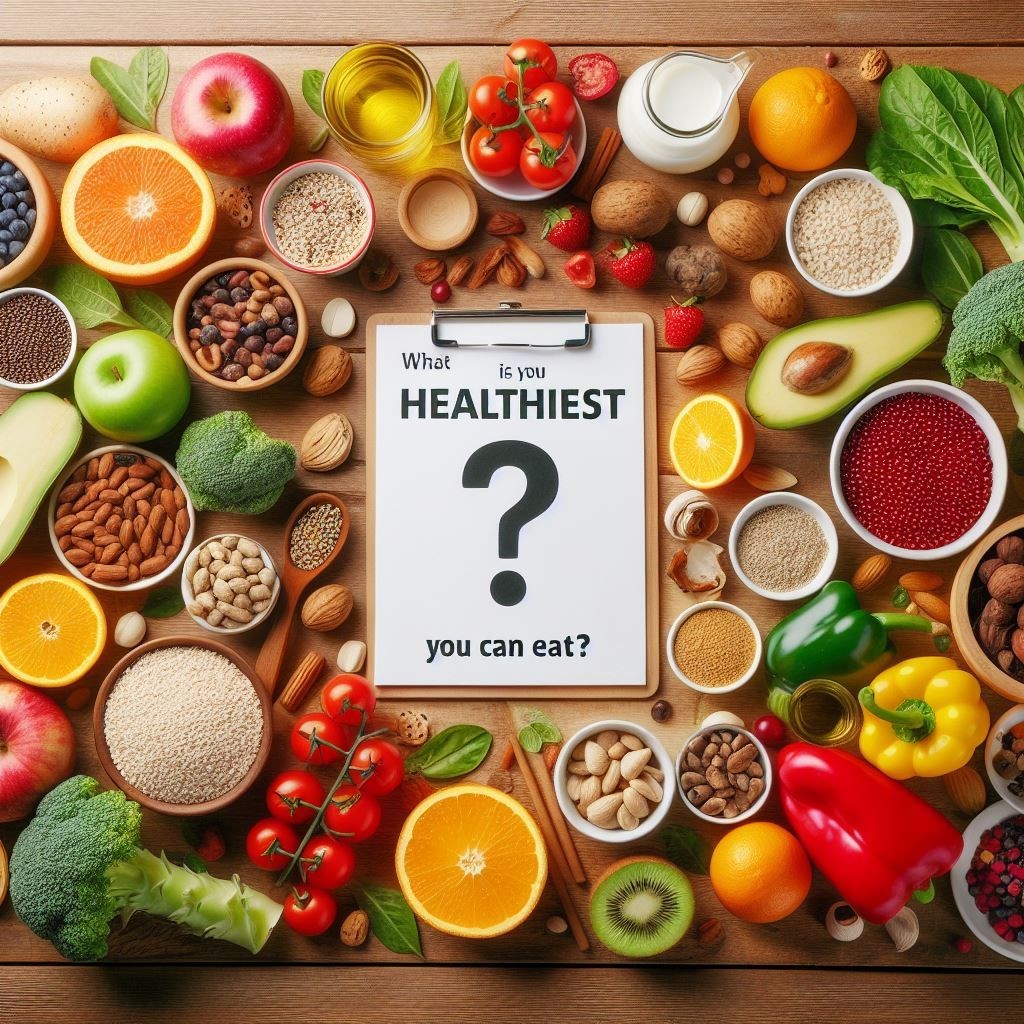
For individual whole foods, these are some of the most nutritious options to focus on:
Fruits and Vegetables
Produce provides essential vitamins, minerals, antioxidants, fibre, and water to help promote good health. What is the healthiest you can eat? All fruits and vegetables are healthy, but these stand out as nutrition superstars:
Leafy vegetables such as spinach, kale, swiss chard, arugula, romaine lettuce, and collard greens are included in the list.
- Cruciferous vegetables: broccoli, brussels sprouts, cabbage, cauliflower
The selection includes berries like strawberries, blueberries, raspberries, and blackberries.
- Citrus fruits: oranges, grapefruit, lemons, limes
- Bananas: Rich source of potassium
- Avocados: Loaded with healthy fats, fiber, and vitamins
- Sweet potatoes: Packed with vitamin A, fiber.
- Carrots: Excellent source of vitamin A
- Tomatoes: Rich in the antioxidant lycopene
Whole Grains
What is the healthiest you can eat? Whole grains provide important nutrients like fiber, B vitamins, iron, magnesium, and selenium. Look for options like:
- Brown rice
- Quinoa
- Oats
- Buckwheat
- Barley
- Bulgur wheat
- Farro
Legumes
Beans, lentils, peas, and peanuts are nutritional powerhouses. They provide a healthy plant-based source of protein, fiber, iron, folate, magnesium, and potassium. Some top options are:
- Kidney beans
- Garbanzo beans
- Black beans
- Lentils
- Split peas
- Edamame
Nuts and Seeds
What is the healthiest you can eat? Nuts and seeds are tasty to get healthy unsaturated fats, plant protein, fiber, and phytonutrient. The best choices are:
- Almonds
- Walnuts
- Pistachios
- Pecans
- Hazelnuts
- Pumpkin seeds
- Sunflower seeds
- Flaxseeds
- Chia seeds
- Hemp seeds
Healthy Proteins
High-quality protein foods are essential for building muscle mass and supporting an active lifestyle. What is the healthiest you can eat? Focus on these lean protein sources:
- Chicken breast
- Turkey breast
- Eggs
- Salmon
- Tuna
- Shrimp
- Lean beef
- Pork tenderloin
- Tofu and tempeh
- Edamame
- Greek yogurt
- Milk
- Peanuts
Healthy Fats
Not all fats are created equal. Emphasize unsaturated fats from plants and seafood. What is the healthiest you can eat? Successful options include:
- Avocados
- Olive oil
- Coconut oil
- Nuts and seeds
- Fatty fish like salmon and tuna
Limit saturated and trans fats like those found in fatty meats, processed foods, and fried items.
The Healthiest Dietary Patterns
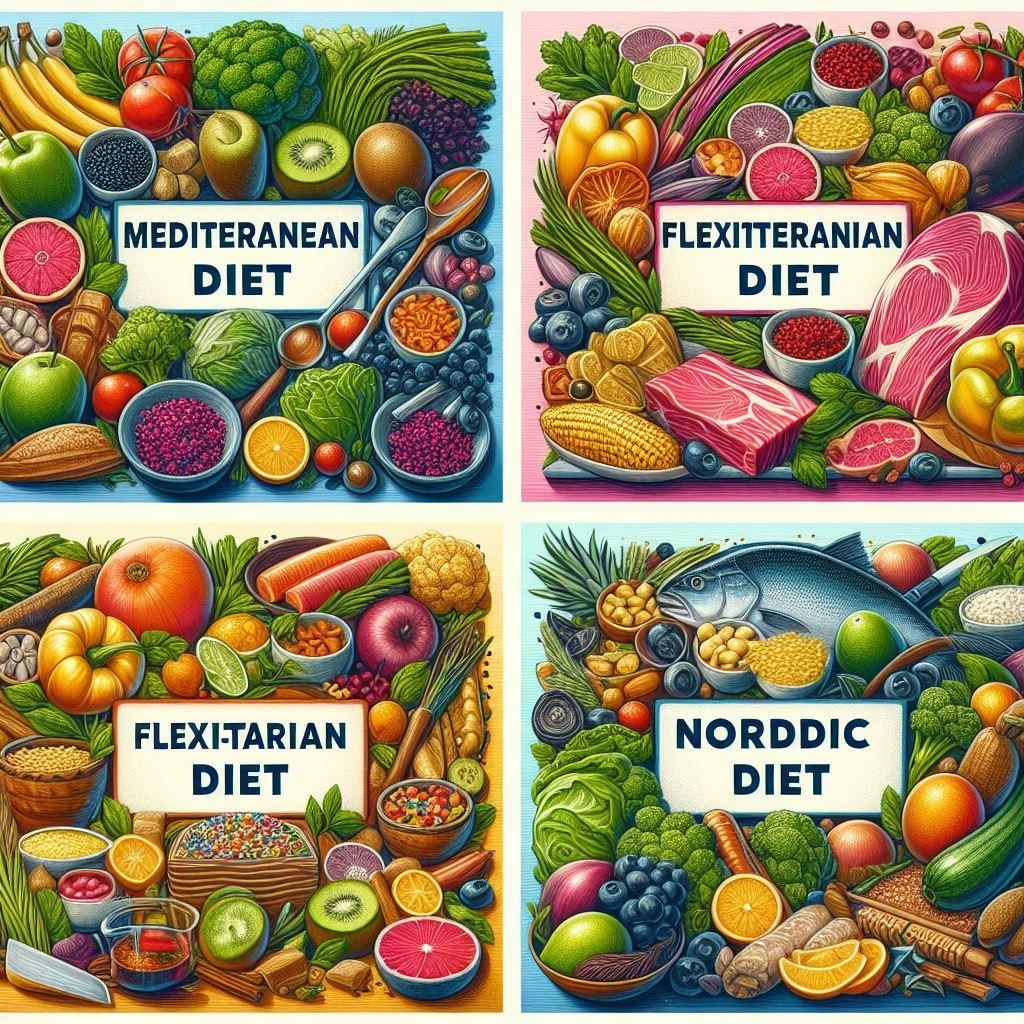
Rather than focusing on individual foods, looking at larger dietary patterns associated with benefits can be helpful. What is the healthiest you can eat? Here are some of the top researched healthy diets:
Mediterranean Diet
The Mediterranean eating pattern accentuates plant-centric elements such as fruits, veggies, whole grains, legumes, nuts, and olive oil. Additionally, it underscores seafood and incorporates moderate quantities of dairy, eggs, and poultry. Red meat is limited. Wine is often consumed in moderation with meals.
What is the healthiest you can eat? This diverse diet has been tied to numerous health benefits, including:
- Decreased risk of heart disease and stroke
- Reduced risk of Alzheimer’s and Parkinson’s disease
- Lower cancer rates
- Improved weight management
- Longer lifespan
DASH Diet
DASH stands for Dietary Approaches to Stop Hypertension. It was designed specifically to help lower blood pressure. The eating plan abounds in a variety of fruits, vegetables, and whole grains., lean protein, nuts and low-fat dairy. It limits sodium, sweets, sugary drinks, and red meats.
Multiple studies show the DASH diet effectively lowers blood pressure. It has also been associated with:
- Lower LDL “bad” cholesterol
- Reduced metabolic syndrome risk
- Decreased diabetes risk
- Weight loss
- Improved heart health
Flexitarian Diet
As the name implies, the flexitarian diet is flexible and largely vegetarian. It encourages eating mainly plant-based foods but occasionally includes meat, dairy, and eggs. The eating regimen prioritizes fruits, veggies, whole grains, legumes, nuts, and plant-based proteins such as tofu.
A flexitarian dietary pattern has been linked with health perks as:
- Weight loss
- Lower blood pressure
- Reduced diabetes risk
- Decreased inflammation.
- Lower cancer and heart disease risk
Nordic Diet
The Nordic diet focuses on traditional Scandinavian foods. It is heavy on fish, berries, root vegetables, whole grains, legumes, greens, milk, apples, and nuts. The diet limits processed and high-sugar foods.
Research shows the Nordic diet may offer advantages like:
- Weight loss
- Lower inflammation
- Reduced oxidative stress
- Improved blood sugar control
- Decreased heart disease risk
Nutrition Tips for Eating Healthy
Now that you know what is the healthiest you can eat, here are some tips for adopting a nutritious dietary pattern:
- Fill half your plate with veggies and fruits. Make produce the foundation at meals.
- Choose whole grains like oats, brown rice, quinoa, and barley instead of refined grains.
- Include plant-based proteins like beans, lentils, nuts, seeds, and tofu.
- Pick healthy fats like olive oil, avocado, and nuts instead of butter or trans fats.
- Embrace herbs and spices to flavour food rather than salt.
- Stay hydrated by drinking water throughout the day.
- Limit sugary beverages and treats. Avoid sodas, juices, pastries, candy, and desserts.
- Read labels. Opt for whole, unprocessed foods free of artificial ingredients.
- Control portions. Nibble, stop when full and avoid oversized servings.
Sample 1-Day Healthy Meal Plan
Here is a sample meal plan showcasing what is the healthiest you can eat in a day:
Breakfast
- 1/2 cup oatmeal cooked in milk with 1 tbsp chia seeds, 1/2 cup berries, 1 tbsp walnuts
- 1 cup green tea
Lunch
- Tuna salad sandwich on whole grain bread with lettuce and tomato
- 1 orange
- Baby carrots
- Unsweetened iced tea
Snack
- 1 cup edamame
- 1 oz mixed nuts
Dinner
- Grilled salmon
- 1/2 cup brown rice
- 1 cup roasted broccoli
- Mixed green salad with vinaigrette
- Glass of water
Dessert
- 1/2 cup plain Greek yogurt with 1 tbsp honey and 1/4 cup blueberries
Incorporating Supplements
While food should always come first, supplements can fill in gaps where your diet falls short. What is the healthiest you can eat? Pairing whole foods with strategic supplementation can further optimize nutrition.
Top Supplements to Consider
- Multivitamin: For overall nutritional insurance
- Vitamin D: Most people are deficient in the “sunshine vitamin”
- Omega-3 fish oil: Helps balance the intake of anti-inflammatory fats
- Probiotics: Support healthy gut bacteria
- Magnesium: Assists energy production and sleep
- Vitamin C: Boosts immunity and acts as an antioxidant
- Fiber: Increases daily fibre intake for digestive health
- Calcium: Important for bone health, especially in women
Talk to your doctor or dietitian about which supplements are right for your individual needs. While supplements can have benefits, they should always accompany rather than replace a healthy diet. Food first!
The Takeaway for What is the Healthiest You Can Eat
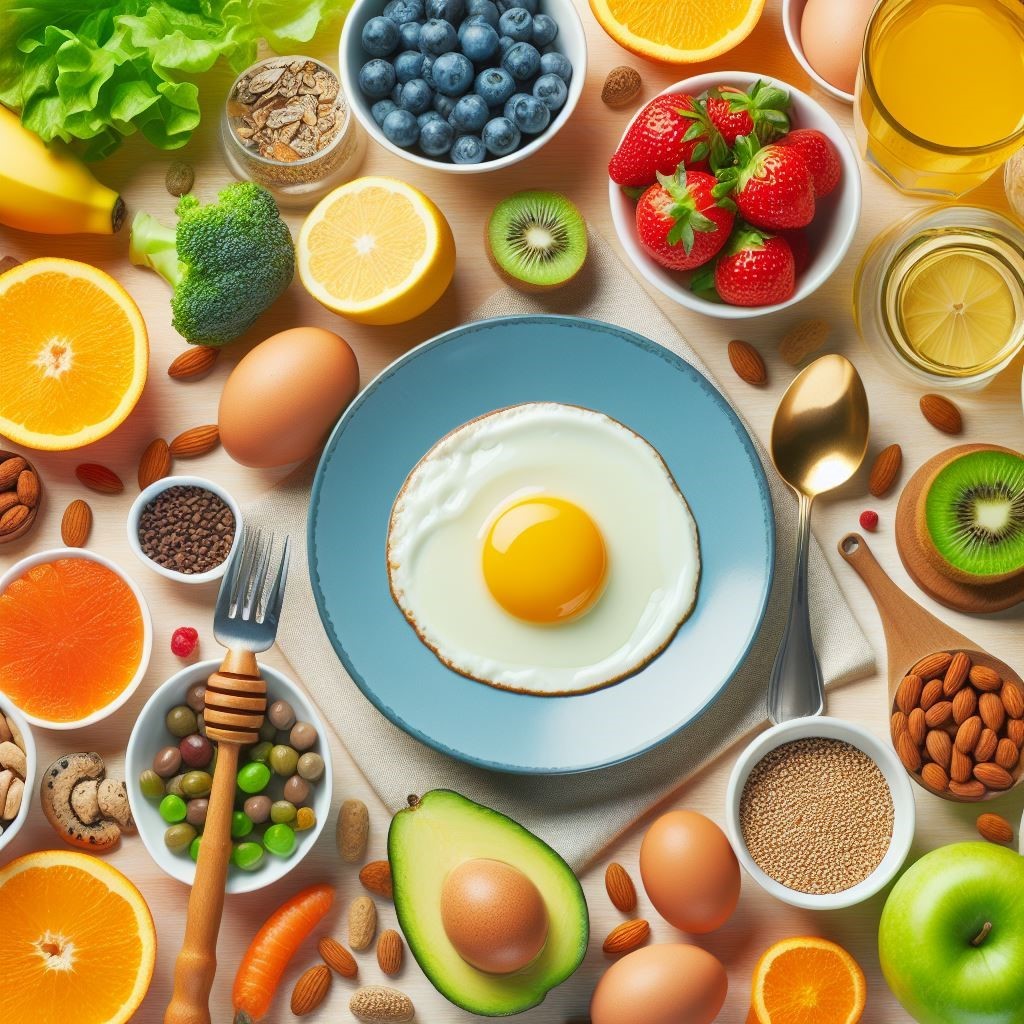
What is the healthiest you can eat? Regarding optimal nutrition, focus on minimally processed whole foods like fruits, vegetables, lean proteins, fiber-rich grains and healthy fats. Emphasize variety and aim to fill half your plate with produce at meals. Consider adopting generalized healthy dietary patterns like the Mediterranean diet rather than worrying about specific nutrients or foods. Supplements can provide an additional layer of nutritional support if needed. But overall, sustained healthy eating based on nutritious whole foods lays the best foundation for achieving optimal nutrition and wellness.
FAQs about what is the healthiest you can eat.
What is the number 1 healthiest food in the world?
The healthiest food in the world is vegetables. Eating a variety of colourful veggies provides vitamins, minerals, fiber, antioxidants, and other nutrients vital for health. Broccoli, spinach, kale, tomatoes, carrots, and sweet potatoes are exceptionally nutritious veggie options.
What is the healthiest meal you can eat?
A simple healthy meal includes lean protein like chicken or fish, whole grains like brown rice or quinoa, and lots of vegetables. For example, a roasted salmon fillet with brown rice and a side salad is a nutritious, balanced meal. Healthy meals emphasize whole foods over processed items.
What is the healthiest diet you can eat?
The Mediterranean diet is consistently ranked the healthiest diet. The central emphasis lies on plant-derived nourishment, encompassing fruits, vegetables, whole grains, legumes, nuts, and the inclusion of olive oil. The Mediterranean diet includes moderate amounts of fish, poultry, eggs, and dairy while limiting red meat and sweets. This well-balanced eating pattern is linked to longevity and disease prevention.
What do the healthiest humans eat?
The healthiest humans eat a diet centred on whole, minimally processed foods. This includes plenty of vegetables, fruits, lean proteins, whole grains, beans, nuts, seeds, and healthy fats like olive oil or avocado. Things like soda, candy, baked goods and fried foods are limited. Healthy humans stay hydrated by drinking water throughout the day.

